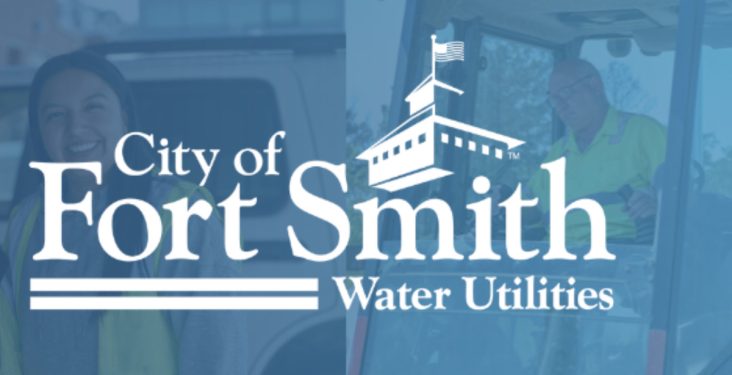Fort Smith officials discuss water needs, with 10-year budget plan at $477.9 million
by November 29, 2023 5:52 pm 673 views

The Fort Smith Water Department’s 10-year capital improvement plan (CIP) calls for spending almost $40 million in 2024 for work on the Lake Fort Smith 48-inch transmission line and other projects.
Utilities Director Lance McAvoy presented the department’s water CIP for 2024 through 2033 at the Fort Smith Board of Directors study session Tuesday (Nov. 28).
“The Utility Department has developed the ten-year CIP as a planning tool to look at projects that are both short and long term forecasted. … Although the ten-year CIP is presented, the projects for 2024 are the only ones the department is or will be seeking funding approval,” McAvoy said in a memo accompanying the CIP.
The total Water CIP for 10 years is $477.975 million, with 2024 having a total planned budget of $39.298 million. Projects will be funded from revenue set aside for the CIP or the 2018 Bond funds. Additional funds may come available from reimbursements from eligible projects (FEMA, ARDot, etc.), the memo states.
“We had to do some long-term forecasting. We had to look at items such as large maintenance projects, system upgrades and certain regulatory requirements that we know we are facing from both the US EPA and (Arkansas) Department of Health,” McAvoy said Tuesday. “Each project would come before the board for approval before any funds are spent.”
He said some of the projects listed in 2024 may go into 2025 or beyond. He said the department looked at the most pressing matters for water, including how to meet the needs of growth in the Chaffee Crossing area.
“Some funding is set aside for projects such as some of bond funding that will go towards the Highway 45 expansion. As the state highway is expanded, we need to move some of our existing water and sewer lines, and some of that will be refunded. So we can spend dollars more than once. Some of this is setting up Fort Smith to get more done with less,” McAvoy said.
The Highway 45 project will relocate 15,920 feet of water line along Highway 45 at an estimated construction cost of $9.1 million. The 2024 budget calls for $5.6 million for the project with $3.5 million to be budgeted in 2025.
The largest project, or rather projects since there are several phases, for 2024 is the Lake Fort Smith 48-inch transmission line.
“In order to assure sufficient water supply to the city, Lance and I sat down and moved all LFS 48-inch transmission lines to the next three years, with the exception of the tunnel, which will drag on until the following year. I think we have impressed upon the board and our citizens that that project is needed,’ City Administrator Carl Geffken said at Tuesday’s meeting.
The project information sheet states that the city recognizes it is important to have redundant water transmission lines to supply the city with safe drinking water. As such, a second, 48-inch transmission line will be designed and constructed to bring drinking water from Lake Fort Smith to the eastside of the Fort Smith. The project is broken into phases.
The CIP calls for environmental assessment for Phase 2 and Phase 5, construction of phase 2A, and design work for Phases 3, 4 and 5 in 2024 with an estimated cost of $18.423 million. McAvoy said while there is not a “water problem” in Fort Smith, there are certain areas of the city that are stressed, including Chaffee Crossing. The LSF project would help alleviate that stress and allow for proper volume and pressure throughout the city.
“So if you start doing the math, with Chaffee coming along quicker and FMS (foreign pilot training center) project, we’re going to have something and get creative,” Director Kevin Settle said at Tuesday’s meeting.
He said he thinks water rates for people outside the city should be changed, which could help fund some of the necessary projects.
“For a long time, Fort Smith has actually had a lower water rate for people outside … and it is time for them to pay their fair share or more to pay for this increase in construction,” Settle said.
The city is expected to have a discussion on a water rate study later this year.
